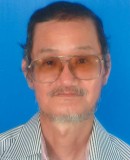
Plenary Lecture
Gender Differences in the Phosphorus Content of the Sino-atrial Nodes and Other Cardiac Regions of Monkeys

Professor Yoshiyuki Tohno
Department of Anatomy
Faculty of Medicine
Chiang Mai University
Thailand
E-mail: ytohno@med.cmu.ac.th
Abstract: To examine whether there were gender differences in the sino-atrial node (SAN), the author investigated the gender differences in the SAN using monkey hearts by direct chemical analysis from a viewpoint of element contents. The used rhesus and Japanese monkeys consisted of 30 males (average age=6.5±7.5 years) and 30 females (average age=12.2±10.3 years), ranging in age from newborn to 30 years. The SAN tissues were removed from the anatomical position of monkey hearts and were confirmed by means of histological observation. After incinerating with nitric acid and perchloric acid, element contents of the SANs, such as Ca, P, S, Mg, Zn, Fe, and Na, were determined by inductively coupled plasma-atomic emission spectrometry. In addition, gender differences in the right atrial walls, left ventricular walls, mitral valves, and left coronary arteries of monkeys were also investigated as controls. It was found that the P content was significantly higher in females than in males in the SANs of the monkeys, but the other six element contents, Ca, S, Mg, Zn, Fe, and Na, were not significantly different between males and females in the SANs of monkeys. Regarding the P content, a similar finding was also obtained in both the right atrial walls and the left ventricular walls of monkeys, but it was not obtained in the mitral valves and the left coronary arteries of monkeys. The P content of tissue is mostly determined by the nucleic acid (DNA and RNA) content and the phospholipid content of tissue. Nucleic acids in the cell nucleus and the cytosol, and phospholipids in the cell membrane are all indicators of metabolically active cells. It is reasonable to presume that the P content in the SAN indicates the active cell density, namely, the number of active cells per volume. Therefore, there is a possibility that the active cell density of the SAN is significantly higher in females than in males.
Brief Biography of the Speaker: Yoshiyuki Tohno was born in Osaka, Japan, in 1944. He graduated from Nara Medical University, Japan, in 1969. He received the Medical Doctor degree from Nara Medical University, Japan, in 1984. From 1984 to 1996, he was an Associate Professor at the Department of Anatomy, Nara Medical University. From 1996 to 2009, he was a Professor at the Department of Anatomy, Nara Medical University. In 2009, the title of Professor emeritus was bestowed upon him from Nara Medical University. Since 2004, he has been a Visiting Professor at Fujian Medical University, P. R. China. From 2009 to present, he has been a Visiting Professor at the Department of Anatomy, Faculty of Medicine, Chiang Mai University, Thailand. He is mainly interested in compositional changes of human tissues, such as the arteries, cardiac valves, sino-atrial node, myocardium, brain, cartilages, bones, ligaments, and tendons with development and aging. He is an active member of New York Academy of Sciences, a member of International Association of Bioinorganic Scientists, a member of Fuzhou Giant Panda Research Center, P. R. China, a member of Primate Research Institute of Kyoto University, Japan, and on the Editorial Boards of Nephrology: Advances and Applications and ISRN Vascular Medicine.